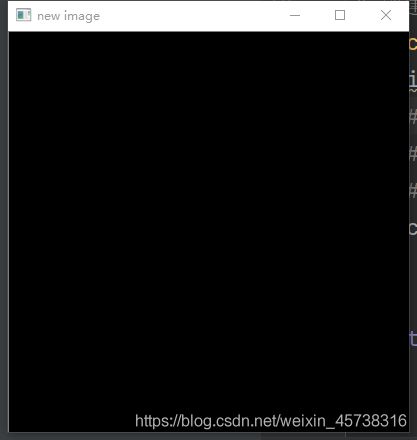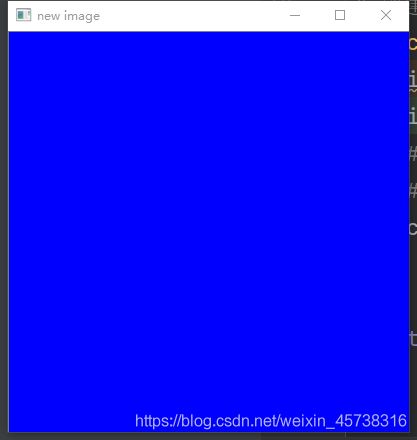Python-Opencv学习(2)——Numpy的基本操作
Python-Opencv学习2——Numpy的基本操作
- 获取图像的高宽
- 遍历并修改像素
- 计时
- 创建新的图像并修改
-
- 多通道
- 单通道
- 创建矩阵
-
- 维度之间的变换
获取图像的高宽
Numpy可遍历数组中的每个像素点,可以修改数组中的像素点的值
# 获取图像的高、宽和通道
def access_pixels(image):
print(image.shape)
height = image.shape[0]
width = image.shape[1]
# channels = image.shape[2]
# 在彩色图像中才有通道,此处是灰度图
print("width : %s,height : %s" % (width, height))
Opencv中RGB彩色图像的顺序是BGR(Blue、Green、Red)
遍历并修改像素
for row in range(height):
for col in range(width):
pv = image[row, col] # 遍历
image[row, col] = 255-pv
但是,这种方法的耗时有点长,可以用下面的API:
# 和上面的函数实现功能一样,可以反转图像,但是速度更快
def inverse(image):
dst = cv.bitwise_not(image)
cv.imshow("inverse", dst)
计时
cv.getTickCount() 和 cv.getTickFrequency()来实现计时的功能
t1 = cv.getTickCount()
t2 = cv.getTickCount()
time = (t2-t1)/cv.getTickFrequency()
print("Time : %s ms" % (time*1000)) # 这里用毫秒来表示,用秒就去掉*1000
创建新的图像并修改
初始化图像的两种方法:
一个是用zeros(),把图像全部变成0(黑色);
一个是用ones(),把图像全部变成1(白色)。
多通道
# 创建新的图像, 并修改
def create_image():
img = np.zeros([400, 400, 3], np.uint8)
img[:, :, 0] = np.ones([400, 400])*255 # 修改第一个通道Blue
# img[:, :, 1] = np.ones([400, 400]) * 255 # 修改第两个通道Green
# img[:, :, 2] = np.ones([400, 400]) * 255 # 修改第三个通道Red
cv.imshow("new image", img)
创建了一幅黑色图像
修改第一个通道的值,结果如下(蓝色)
单通道
def create_image_single():
# img = np.zeros([400, 400, 1], np.uint8)
# img[:, :, 0] = np.ones([400, 400])*127
# 或者用下面这两行
img = np.ones([400, 400, 1], np.uint8)
img = img * 127
cv.imshow("new image", img)
创建矩阵
def fill_in():
m1 = np.ones([3, 3], np.float) # 注意这里的类型
m1.fill(122.388)
print(m1)
输出结果为:
[[122.388 122.388 122.388]
[122.388 122.388 122.388]
[122.388 122.388 122.388]]
将float改为uint8:
def fill_in():
m1 = np.ones([3, 3], np.uint8)
m1.fill(122.388)
print(m1)
结果变成整型
[[122 122 122]
[122 122 122]
[122 122 122]]
类型要选择合适,看这个例子:
def fill_in():
m1 = np.ones([3, 3], np.uint8)
m1.fill(12238.8)
print(m1)
此时被截断,只能输出:
[[206 206 206]
[206 206 206]
[206 206 206]]
因此,类型要选择合适,避免发生如上的截断情况,导致后续处理达不到效果
避免溢出,可以用cv.convertScaleAbs( )
维度之间的变换
用reshape(),但是数据不能变,1* 9不可能变成2* 5
# 创建矩阵
def fill_in():
m1 = np.ones([3, 3], np.uint8)
m1.fill(122.388)
print(m1)
# 维度变换
m2 = m1.reshape([1, 9])
print(m2)


